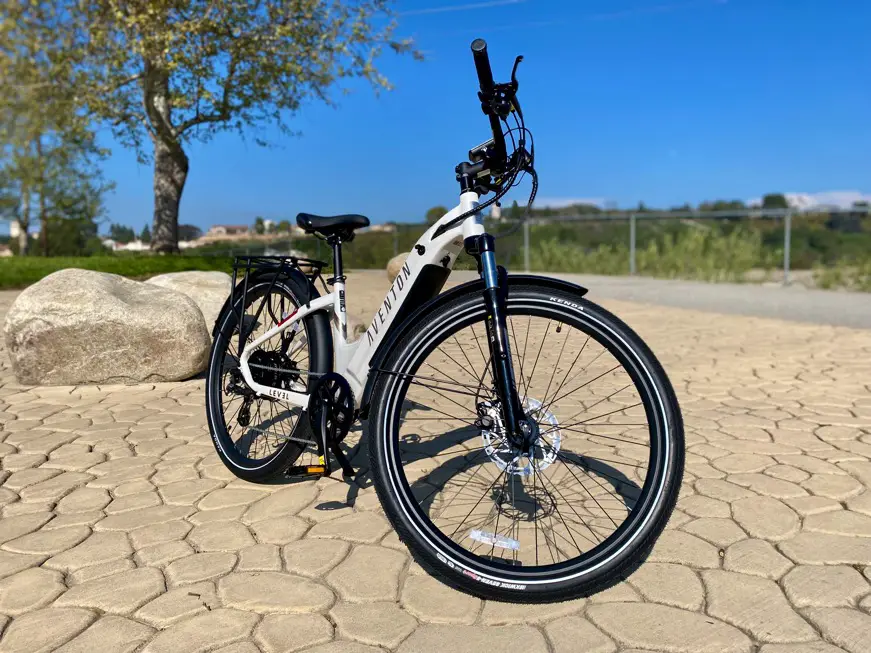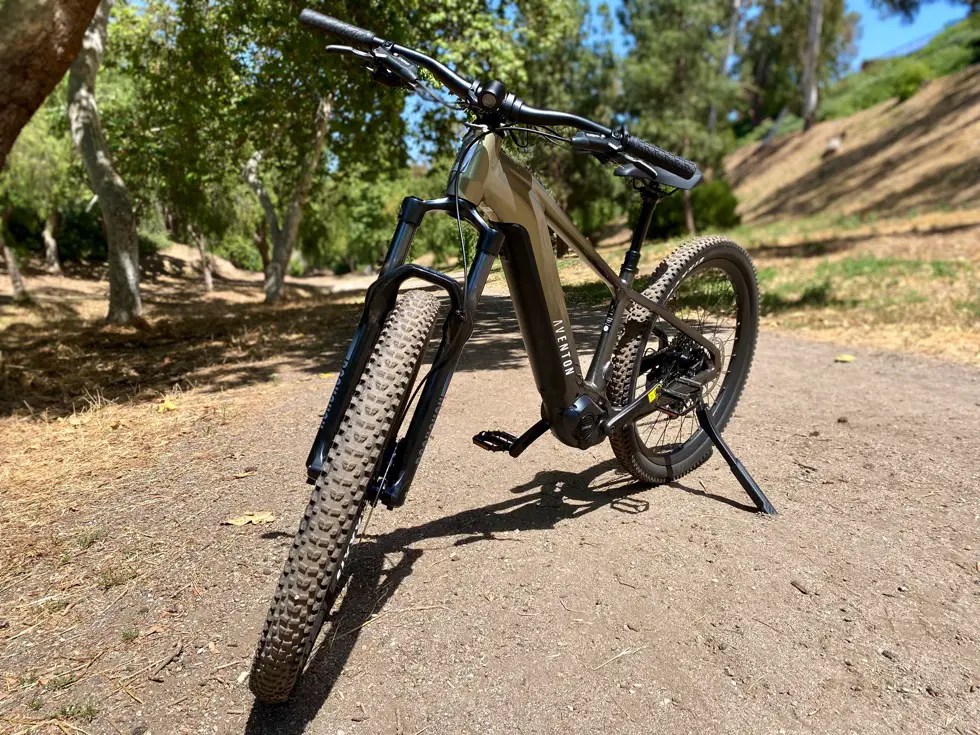Are you interested in finding out how powerful the most typical e-bike battery sizes are, or maybe trying to figure out your current battery size? Or maybe you’re hoping to upgrade from your current battery to a larger one.
Either way, it’s helpful to understand the typical e-bike battery sizes available and how they perform.
A 36-volt or 48-volt battery is the most typical size for an electric bike, providing 360-watt-hours to over 800-watt-hours (Wh), depending on the number of Amps. However, some e-bikes use a 52-volt battery that produces additional power and speed to assist in climbing steep hills or going over rough terrain.
Since electric bike batteries are often the most expensive component on the e-bike itself, it’s important to get one with the battery size you need for your riding adventures. If you get a battery that’s too big, you’ll be wasting money and adding weight to your e-bike. But, if you get a small battery, you won’t be able to ride as far as you need to or ride long-distance on difficult terrain.
In this article, we’ll be looking at how e-bike battery size relates to power and how you can find out what size battery you need, so keep reading!
Be sure to see the table below showing the typical electric bicycle battery sizes.
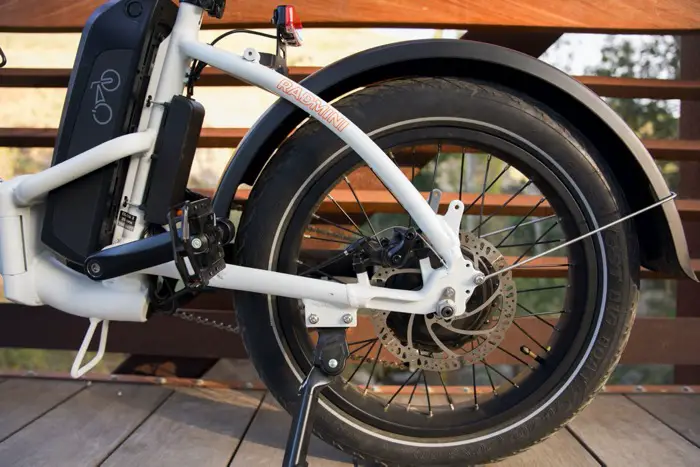
What is the Typical E-Bike Battery Size?
Electric bike battery “sizes” are described by either their wattage or battery capacity, which can vary according to the manufacturer’s product or any state, province, or national regulations.
For example, in the UK, an e-bike’s battery isn’t allowed to produce more than 250W of continuous power, which means in terms of battery “size,” they won’t be very large. They also won’t be as powerful as a 500W or 750W battery.
In contrast, most US states have laws that typically allow electric bike motors up to 750W on public lands.
The size of your ebike battery can heavily depend on what kind of bike you have. Some electric bikes have more watts than others because they’re made to traverse terrains like steep streets and bumpy trails. Meanwhile, other e-bikes have a higher average operating voltage to get their lithium batteries to last longer on each ride.
If you want to know the literal size of an e-bike battery, the industry-standard size that factories use is about 18inches x 6.5 inches, but some
This table provides the common range of e-bike batteries. We’ll be talking about commonly used lithium-ion batteries, as opposed to lead-acid batteries. Further, there may be smaller or bigger batteries than what is presented in the chart below:
| E-Bike Motor Size (Watts): | Battery Volts (V): | Amps (A) Per Hour (h) Half-hour (hh) Quarter-hour (qh): | Battery Amp Hours (Ah): | Battery Watt Hours (Wh): |
| 200W-1500W | 36 | 10/h 20/hh 40/qh | 10 | 360 |
| 250W – 750W | 36 | 13/h 26/hh 52/qh | 13 | 468 |
| 250W – 900W | 36 | 17.4/h 34.8/hh 69.6/qh | 17.4 | 626 |
| 250W – 500W | 48 | 10.4/h 20.8/hh 41.6/qh | 10.4 | 500 |
| 250W – 750W | 48 | 13/h 26/hh 52/qh | 13 | 624 |
| 250W – 1000W | 48 | 15.6/h 31.2/hh 62.4/qh | 15.6 | 750 |
| 250W – 1200W | 48 | 17.4/h 34.8/hh 69.6/qh | 17.4 | 835 |
| 250W – 1200W | 52 | 13/h 26/hh 52/qh | 13 | 676 |
Common E-Bike Battery Sizes by Watts
Battery sizes that are organized by their watt-hours will vary based on what type of e-bike you own.
There are three main categories of e-bikes, each with a different lithium-ion battery size:
- Commuter e-bikes
- Performance e-bikes
- Utility e-bikes
Each category has its own sub-types that all have different watt-hours according to their needs.
Commuter e-bikes
Commuter e-bikes are exactly what they sound like. They’re the bikes made for taking you across town to work or school, and then back home. These include:
- City e-bikes
- Hybrids
- Cruisers
- Electric fat bikes
Commuter e-bikes usually come with 480, 500, or 672 watt-hours (Wh) batteries. They don’t need as much power (watts (W)) as the e-bikes that are meant for rougher terrain in the hilly countryside. They also aren’t normally used to travel far, so they don’t typically have as many watt-hours.
Performance e-bikes
Generally, performance e-bikes are made for people who train for marathons or ride mountain trails. These e-bikes include:
- Electric mountain bikes
- Gravel ebikes
- Electric road bikes
These are meant to go farther and their owners want power and speed. The typical battery sizes of this category depend on which subtype of e-bike you choose. For instance, electric mountain bikes may have 250, 418, or 500Wh batteries while road e-bikes have either 252, 320, or 500Wh batteries.
Utility ebikes
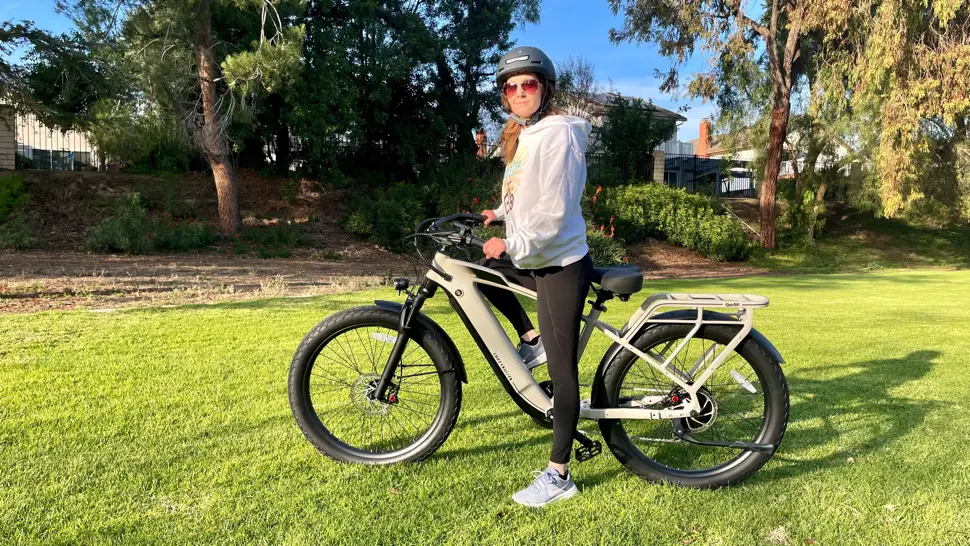
Electric utility bikes are the sort you would use for off-roading, carrying small loads, or for multi-purpose use. These types of e-bikes include:
- Electric cargo bikes
- Hunting e-bikes
- Folding bikes
Folding e-bikes come with either 180, 250, or 500Wh batteries, hunting e-bikes come with 672, 720, or 840Wh batteries, and cargo e-bikes could have 374, 400, 500, or 624Wh batteries.
How is an E-Bike Battery’s Power Affected by Watts?
To answer this question, we need to know what affects the power in a battery and how watts are related to power. How much usable energy you get out of your e-bike’s battery and motor comes from several key factors:
- Amps (A)
- Volts (V)
- Amp-hours (Ah)
- Watt-hours (Wh)
Amps
Amps (A) just measure your electrical current. Basically, it tells you how many electrons are flowing through the current. The more amps in an ebike battery, the greater the electron flow. It’s like water in that the bigger the hose diameter you have, the more water you’ll have come out.
In general, it’s the battery management system that determines the amount of current that can safely go in and out of the battery pack.
Volts
Volts (V) measure your battery’s power, but they are not the power itself. A battery’s voltage is the amount of force “pushing” the electron current through the circuit of battery cells. A higher voltage means your electric bike battery has more power and will last longer before you have to replace it.
Amp Hours
Amp-hours (Ah) tell you how long your electric bike will be able to put out its marketed volts at its available amp options. When you want more power from your pedal assist, you’ll be increasing the amps, like when you use a sink faucet.
So, if you had a 48v battery with 10Ah, it will give 48V at 10Amps for an hour, 48V at 20A for 30 minutes, or 48V at 40A for 15 minutes. So the more amp hours you have, the better battery range and longer battery life you’ll get.
Watts
Watts (W) are basically your bike’s horsepower. A watt-hour (Wh) is a unit of power equal to your volts times your amps (Wh= V x A). Battery cells that have 48V and 10.4Ah would produce 48V x 10.4Ah for a maximum of 500 Watt-hours (Wh).
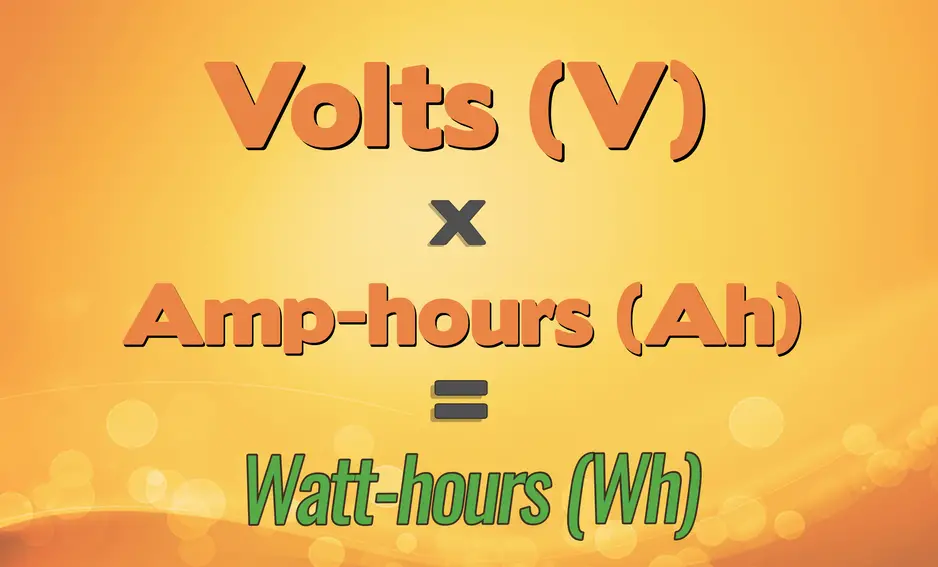
The wattage that your e-bike battery discharges will indicate how powerful your battery is. Since a watt is a unit of power, the more watts your battery produces, the more powerful the battery is. For example, if you see an electric bike battery marketed as a 250W battery, this lets you know how many watts the battery is fully capable of producing.
Sometimes the typical e-bike battery size is described in watts instead of watt-hours or dimensions. The range of electric bicycle batteries in watts is between 250W and 750W (just like electric motors), but it’s not unusual to see higher or lower wattage.
Are Ebike Batteries More Powerful the More Watt-Hours They Have?
Watt-hours are a way to measure how many watts of power is consumed in an hour. A watt-hour (Wh) is a unit of measurement for energy that measures power expended over time. 1 Wh would equal 1 watt (W) of energy being consumed on average over the course of an hour.
For instance, a small battery that uses 100 watts of power in four hours would have used 400Wh of energy.
In the e-bike world, it measures battery capacity and range. The more watt-hours your battery is capable of the farther out you can ride. Thus, larger capacity batteries can take you 80 miles whereas a smaller battery might only take you 20 or 30 miles on one charge. The average range of watt-hours that e-bike batteries come in is 250Wh – 750Wh, but this range is expanding.
Today, it’s not difficult to get your hands on an e-bike battery that has a little more than a kilowatt-hour of power (1000Whs). Many electric bicycle brands, like Juiced Bikes, are offering 1000W electric bikes with up to 52 Volt, 19.2Ah lithium-ion batteries, and higher.
If a seller doesn’t state how many watt-hours their battery is capable of you can calculate it yourself. This isn’t really unusual, because if a manufacturer made one that has low voltage, they may try to market it as a “high amp-hour pack.” Watt-hours are calculated by multiplying the volts of a battery with its amp hours: Wh = (Ah x V).
Which E-Bike Battery Should I Get?
The general rule of thumb with e-bike battery replacement is that the battery size (typically lithium-ion) it comes with is the same one you should replace it with. The reason for this is that trying to attach a new one that has too much voltage to your existing motor could overload the circuits and damage the battery severely.
You should get a battery that has the same watt-hours as what was originally put on the electric bike by the manufacturer. A battery of a different size can damage your motor and battery, leaving you without a bike to ride.
But what if you wanted to increase your e-bike’s range? Is it possible? There may be battery upgrades from the same e-bike manufacturer you purchased from that will fit your e-bike’s motor. They won’t be able to add much more power because the motor can only handle so many volts.
Read this article before adding a second battery to your e-bike!
If you’re reading this, and you haven’t bought an e-bike yet, you can avoid this frustration by figuring out how much power you need to begin with. To do that you first need to figure out how many watt hours you need. Are you someone who just needs to be able to make it to work and back each day or do you want to blast your way through 150 miles on an epic ride?
At the first pedal assist option, you’ll probably be using about 15Wh/mile. If your commute is 5 miles one-way, that’s 10 miles both ways and 150Wh per work day. On the other hand, if you use the full throttle because you’re running late, that will be more like 40Wh/mile, or even 50 if there are hills to and from. That would equate to 250Wh one way, plus 75Wh one the way home (presumably you’re not racing back after a long day).
So, for the commuter example, you might want to find a battery that gives you at minimum, the Wh that allow you to book it to and from your destination whenever you’re running late without worrying about losing all your juice.
As for longer bike rides, the average watt-hours you use per mile is 20Wh. If you intend to ride 50 miles, how far does your current battery get you? A 36v battery with 10Ah equals 360Wh. 360Wh / 20Wh/mile = 18 miles of range. At full throttle, a 1000Wh battery would get you 50 miles.
Conclusion
We hope this article made it easier to understand the power you need out of your e-bike battery and the power you’ll get in relation to the typical e-bike battery sizes, whether you just wanted to know the common dimensions or the power of available batteries. Happy riding out there!
Learn more about e-bike battery safety and charging:


